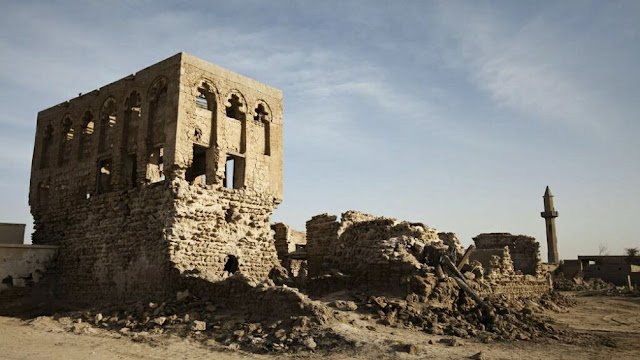One of the most well-known images across the world is that of Jesus Christ dying on a cross. This religious symbol can be seen in numerous churches, museums, sculptures, drawings, and even on jewelry. But what is the real story behind Jesus’ crucifixion, and how did he die?

The account of Jesus’ death is found in the Gospels of the Bible, written by the evangelists Matthew, Mark, Luke, and John. They recount Jesus’ final hours, the humiliations he faced, and how he endured six hours of suffering on the cross.
Some of the details about Jesus Christ’s death are mentioned only in the Christian Bible and may be hard to locate in other historical sources. However, records from that era do reference Jesus’ life and death, indicating that the accounts of his crucifixion are rooted in historical fact.
Who Was Jesus Christ?
The Gospels of Matthew and Luke in the Bible tell us that Jesus was born in Bethlehem, likely sometime between 7 B.C.E. and 1 B.C.E. However, he was almost certainly not born on December 25th, and his actual name might have been Yeshua.
There is a lot of uncertainty surrounding Jesus, including details about his height, race, and other physical characteristics. But what does appear clear from the Gospels is that, as an adult, Jesus became a traveling preacher.
In his 30s, he is said to have devoted his life to preaching and healing, and many of his followers came to believe that he was the Messiah. (The name “Christ” comes from the Greek word christos, which is a translation of the Hebrew word messiah, meaning “anointed one.”) This belief put him in conflict with some Jewish religious leaders.

They grew concerned about his rising influence, and Jesus reportedly sensed that leaders in the largely Jewish Roman province of Judaea (modern-day Israel and Palestine) would soon seek his death. According to the Gospel of Matthew, “Jesus began to explain to his disciples that he must go to Jerusalem and suffer many things at the hands of the elders, the chief priests, and the teachers of the law, and that he must be killed and on the third day be raised to life.”
Around 30 or 33 C.E., Roman authorities arrested Jesus after one of his disciples, Judas Iscariot, agreed to hand him over to the Roman government in exchange for 30 pieces of silver. This act of betrayal, according to the Gospels, ultimately led to Jesus’ crucifixion near Jerusalem.
Inside The Crucifixion Of Jesus
After being arrested, Jesus was put on trial for allegedly claiming to be the “King of the Jews.” According to Bible Study Tools, under Roman law, this claim was considered an act of rebellion against Rome, a crime punishable by crucifixion.
The Gospels say that Jesus was taken before Pontius Pilate, the Roman governor of Judaea, who ruled the area between 26 C.E. and 36 C.E. While Pilate was reportedly hesitant to convict Jesus, he ultimately gave in to public pressure and permitted Jesus’ crucifixion.
On the day of Jesus’ crucifixion, believed to have taken place in either 30 C.E. or 33 C.E., he was clothed in a purple robe, a color symbolizing royalty, and made to wear a crown of thorns as his executioners mocked him as the “King of the Jews.” Roman soldiers forced him to carry his cross to a hill known as Calvary, where he would be crucified alongside two criminals.

At the site of the crucifixion, Jesus was stripped of his clothing and nailed to the cross. While scripture states that nails were driven into his hands and feet, some modern scholars suggest that the nails were actually hammered into his wrists rather than his hands. HISTORY UK explains that this would have provided a more secure way to attach him to the cross.
As Jesus struggled in pain on the cross, a crowd gathered below to taunt and mock him. The Jewish leaders shouted, “He saved others; let him save himself, if he is the Christ of God, his Chosen One!” The Roman soldiers also added to the mockery, placing a sarcastic sign above Jesus that read, “This is the King of the Jews” (INRI). They then divided his clothes among themselves and cast lots for his garments.
After that, they simply waited for him to die.

According to the Gospels, Jesus endured six hours on the cross before his death. During the crucifixion, he cried out, “My God, my God, why have you forsaken me?” The Gospel of Luke adds, “Jesus called out with a loud voice, ‘Father, into your hands I commit my spirit.’ When he had said this, he breathed his last.”
At that moment, the sky grew dark. The Gospels also describe the ground shaking, as if the Earth itself was reacting to the death of Jesus.
“And when Jesus had cried out again in a loud voice, he gave up his spirit,” explains the Gospel of Matthew. “At that moment the curtain of the temple was torn in two from top to bottom. The earth shook, the rocks split and the tombs broke open.”
According to HISTORY UK, there was indeed seismic activity in the region around the time of Jesus’ crucifixion. However, while this suggests the possibility of an earthquake, it’s impossible to verify if one occurred at the exact moment of Jesus’ death.

Regardless of whether an earthquake occurred, the crucifixion of Jesus ultimately came to an end with his death. Some modern medical experts have suggested that he may have died from a pulmonary embolism, while others believe that cardiac rupture, asphyxiation, or shock are more plausible causes. Another theory even suggests that he might have died from the strain of carrying the cross, possibly due to a dislocated shoulder that resulted in fatal internal bleeding.
To confirm his death, a Roman soldier pierced his side with a spear, and afterward, Jesus was taken down from the cross and laid to rest in a rock-hewn tomb. However, the story doesn’t quite conclude there.
What Happened After Jesus Died
If Jesus Christ was indeed crucified, as stated in the Gospels, he was among many individuals who met their end on a cross in ancient times. According to HISTORY, crucifixion was first developed by the Assyrians and later spread to Persia, where Alexander the Great encountered it and then introduced it back to the Mediterranean. The Romans adopted this practice in the third century B.C.E.
The Romans used crucifixion effectively, particularly in their far-flung territories, as a means to quash rebellion among activists. Therefore, the crucifixion of Jesus was just one of many that took place during their reign. However, his case is particularly significant due to what the Gospels claim happened afterward—his resurrection.
The Gospels tell us that Mary Magdalene and “the other Mary” visited Jesus’ tomb, where they encountered an angel. “Do not be afraid, for I know that you are looking for Jesus, who was crucified,” the angel reportedly said. “He is not here; he has risen, just as he said. Come and see the place where he lay. Then go quickly and tell his disciples: ‘He has risen from the dead and is going ahead of you into Galilee. There you will see him.’ Now I have told you.”

News of the alleged resurrection quickly spread, leading many to believe that Jesus was indeed the Messiah and the Son of God. However, how do ancient sources—other than the Bible—explain the events surrounding Jesus’ crucifixion?
While there are few historical records, both Jewish and Roman historians seemed to recognize Jesus’ death and the rise of Christianity that followed. According to HISTORY, a Jewish historian named Flavius Josephus wrote in 93 C.E. about “Jesus-who-is-called-Messiah” and noted that Jesus “did surprising deeds” before Pilate permitted his crucifixion. (It is worth mentioning that later Christians may have altered parts of Josephus’ writings.)
Similarly, Roman historian and senator Tacitus wrote in 116 C.E. that Emperor Nero blamed “the persons commonly called Christians, who were hated for their enormities” for the burning of Rome in 64 C.E. Tacitus also provides additional details, stating, “Christus, the founder of the name, was put to death by Pontius Pilate, procurator of Judea in the reign of Tiberius.”

While records like these imply that Jesus really existed and was executed by Pilate, his crucifixion did not become a significant aspect of Christianity until much later. According to TIME, for many years after his death, images depicting Jesus dying on the cross were viewed as too gruesome, which is why the crucifixion initially held little importance in Christian iconography.
It was not until around 400 C.E., following the emergence of the first Christian Roman emperor, Constantine, who abolished crucifixion, that the cross evolved into a vital symbol in Christianity. From that point onward, Jesus’ crucifixion became an essential part of the Christian narrative, representing victory over sin and death, and began to be depicted more often in art.
Regardless of whether one believes that Jesus’ crucifixion occurred exactly as described in the Bible, the story of his death has remained remarkably influential. As of 2023, there are approximately 2.6 billion Christians worldwide, and one of the most common ways to express faith in Christ is by wearing a cross.



